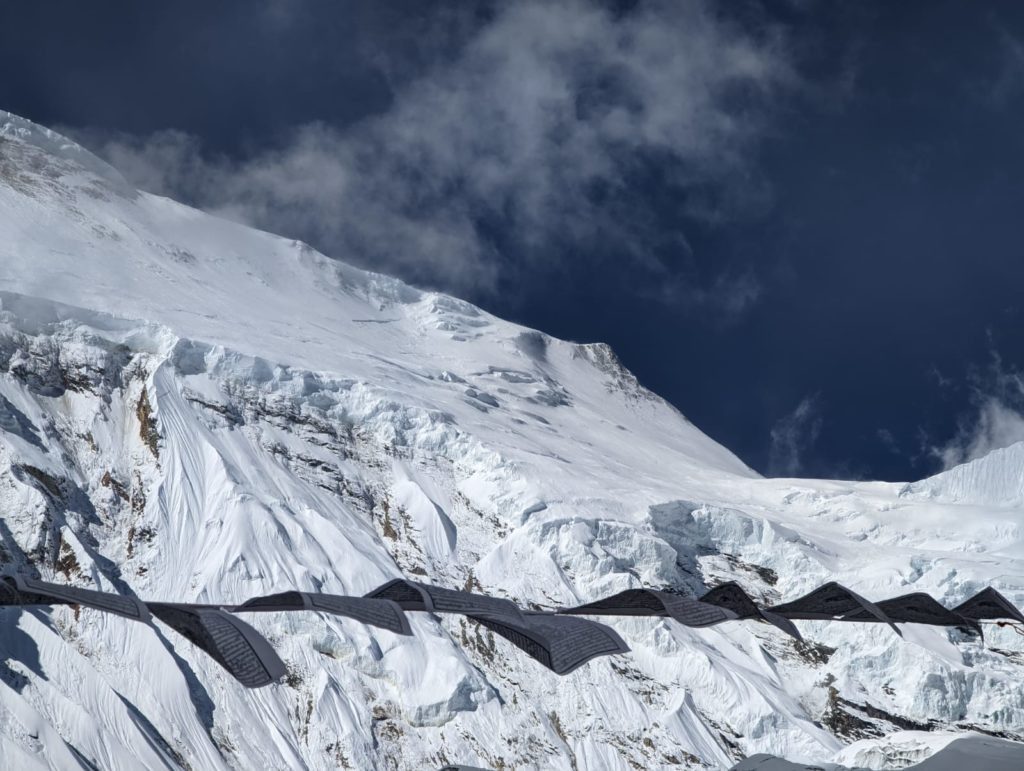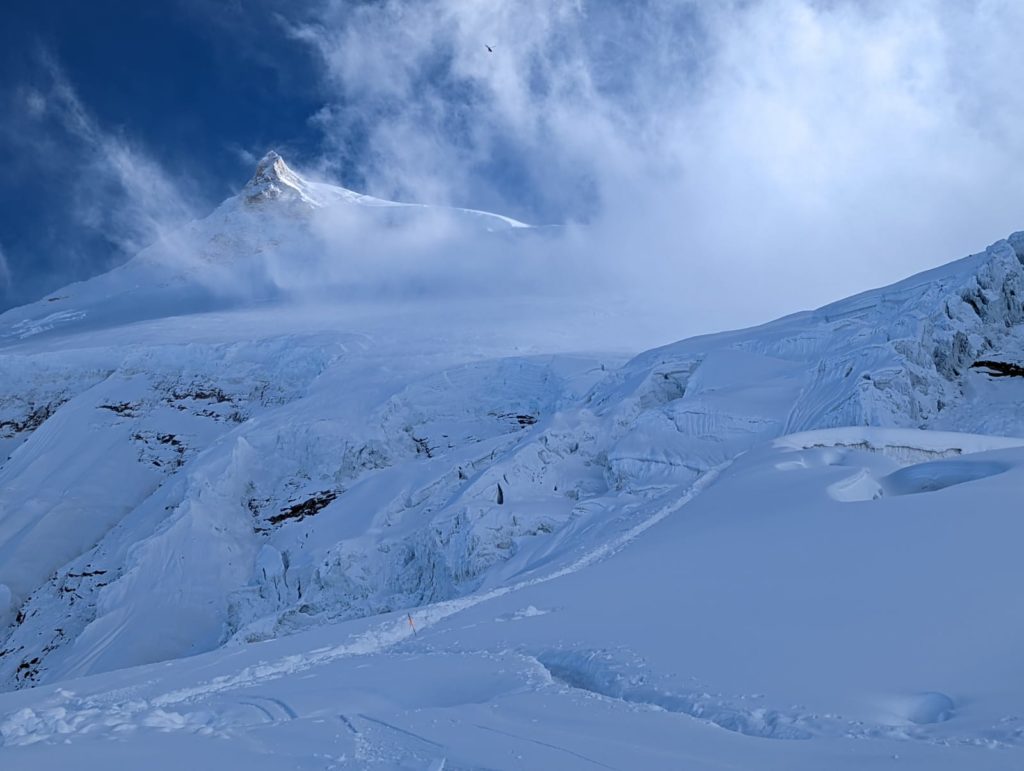Holding Pattern on Manaslu
The CTSS Manaslu team is all together at Basecamp, CTSS Guides Tendi Sherpa, Tomi Ceppi, Robert Jantzen & Pasang Sherpa have decided to put the team into a holding pattern while snow conditions settle and we watch the weather to see if there is a prudent opening to ascend back onto the upper mountain.
Our upper mountain logistics are set, the team is fully acclimatized, and all systems are go for a summit bid – if, and when, the mountain comes into shape.
If you’ve been following the news around Manaslu you’ve likely seen reports of bad snow conditions and high winds with several expeditions packing up and heading home over the last 3 days, as well as some expeditions choosing to continue their push higher onto the route.
Every good expedition should be equipped to make their own call in times like this, and CTSS assesses it’s not yet time to throw in the towel, but it also not safe to ascend back into terrain on the upper mountains. This call gives our clients every chance for conditions to change and an opportunity for a summit to occur, while maintaining the margin of safety CTSS is known for.
Guide Robert Jantzen explains the current conditions and decision making on our Manaslu expedition;
“It’s important to note, that while we are proud of how CTSS makes tough calls in the mountains, the risk assessment and decision making described below is not to be judged against other teams who have made the call to pull out already, nor is it a critique of teams currently climbing high on the mountains. We make independent decisions based on our own experience, information, team, and risk tolerance, as should all Mountain Guides and Mountain Guide companies.
We’ve got a fantastically strong team of climbers this year, great logistics, and a rock star team of climbing Sherpa who have all put an incredible amount of time and effort into getting ready for a summit bid. With everything primed for a summit bid, why are we still at basecamp? Our job as Guides, when it comes down to brass tacks, is to get every member of the team back home in good health, 10 fingers, 10 toes, and able to climb their next mountain. The process of climbing and summiting is always held in balance, to the all important job of getting back safely.
Guides bring in to a play whole catalogue of experience, techniques, information sources, tricks, tips, and sometimes downright toughness, to lead a team. We live and thrive in “grey areas” where there are often multiple “right” decisions, which balance factors such as avalanche risk, weather conditions, group fitness, mountain traffic, and dozens of other contributing factors. When a mountain is in marginal condition, guiding is a fantastically cerebral job.
This season has been defined by an abnormally large amount of snow falling on the upper mountain. While snow in the mountains is part of the game, storm totals in the amounts we’ve seen, raise high levels of avalanche concern. As a team we have managed to complete our full acclimatization rotations up to Camp 3 without stepping out onto large avalanche slopes during poor conditions, but the route from Camp 3 to Camp 4, and Camp 4 to the Summit both cross known avalanche problem areas.
While avalanche problem areas may sound like a continuous and potentially unacceptable risky location to travel through it’s important to keep in mind that they are a mitigable hazard. Avalanches are actually relatively predictable, a known set of weather patterns cause their likelihood to increase while another known set of weather patterns cause their likelihood to decrease or cease to exist all together. We can’t control these slopes with explosives as a ski area can, but we can choose to cross them only under conditions which reduce, or eliminate the chance of an avalanche occurring while we are there.
Right now the upper mountain of Manaslu has received both large new snow totals and, over the last few days, strong winds. This wind is picking up snow from one side of the mountain and depositing it to slopes on, around, and above our climbing route. Wind driven snow compacts together forming a cohesive slab on the surface, if there is a weak layer of snow under this slab it can be triggered and all slide together. From basecamp we have seen new avalanches on several slopes, including large-scale avalanches which have run across the route and even into the Camp 2 area.
At the moment the presence of continued wind and wind transported snow, along with the pre-existing concern of large storm snow totals up high, causes us to deem climbing above Camp 1 as an unacceptable risk for our team, so we’re resting at basecamp where we can stay healthy and in prime shape.
Compounding this is a new round of forecasted precipitation scheduled to arrive before the current avalanche concerns have a chance to settle out. If this new snow falls on top of existing wind slabs, or other weak layers, the likelihood of an avalanche increases even more.
So why are we still here? Well, a forecast is a forecast and it can change. On 8000m peaks conditions can change quickly, storms can build without being forecasted, and forecasted storms can dissipate before they affect the climbing route. Just as our initial summit window shut with new increased winds, there is a slim chance a new summit window could open toward the end of the season.”
While we have assessed that climbing high on Manaslu is currently not within our risk tolerance the team of guides from CTSS will continue to watch the forecast, gather information on conditions high on the mountain, assess, and reassess continuously. If, or when, we see a chance to prudently ascend we are ready to go.
Our climbers have put in a massive investment of time, money, and raw effort to get to this point. We will always remain prepared to support them until the last day of the season. Let’s see what the future brings!




